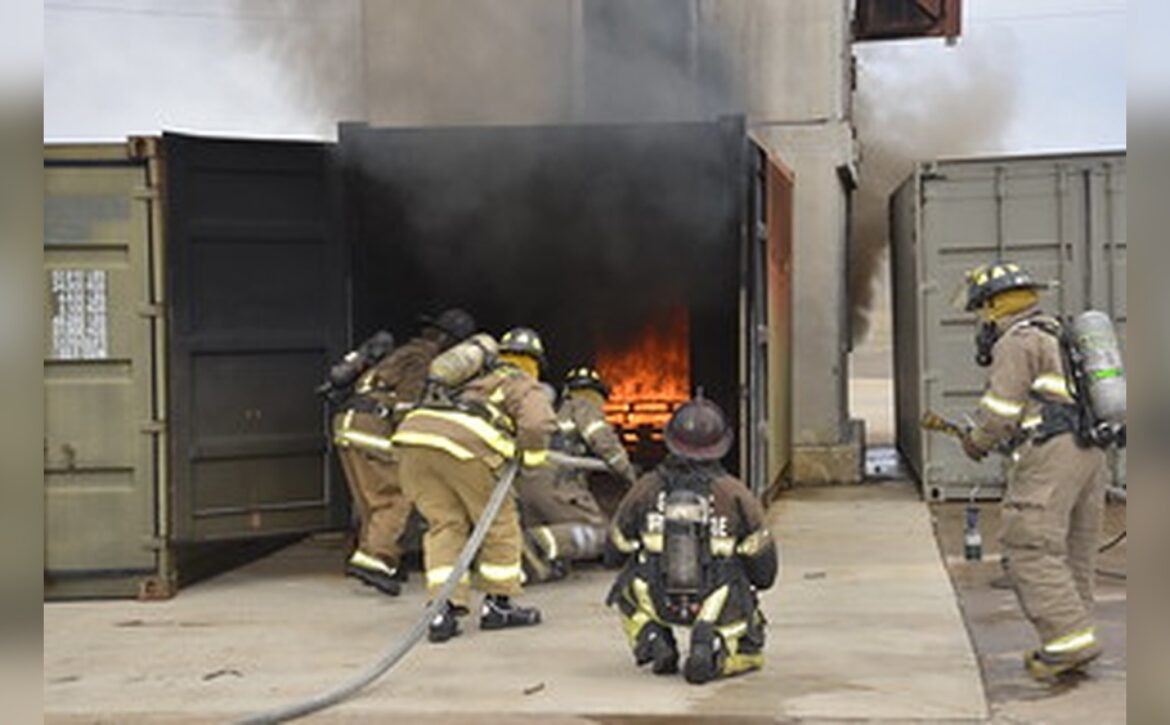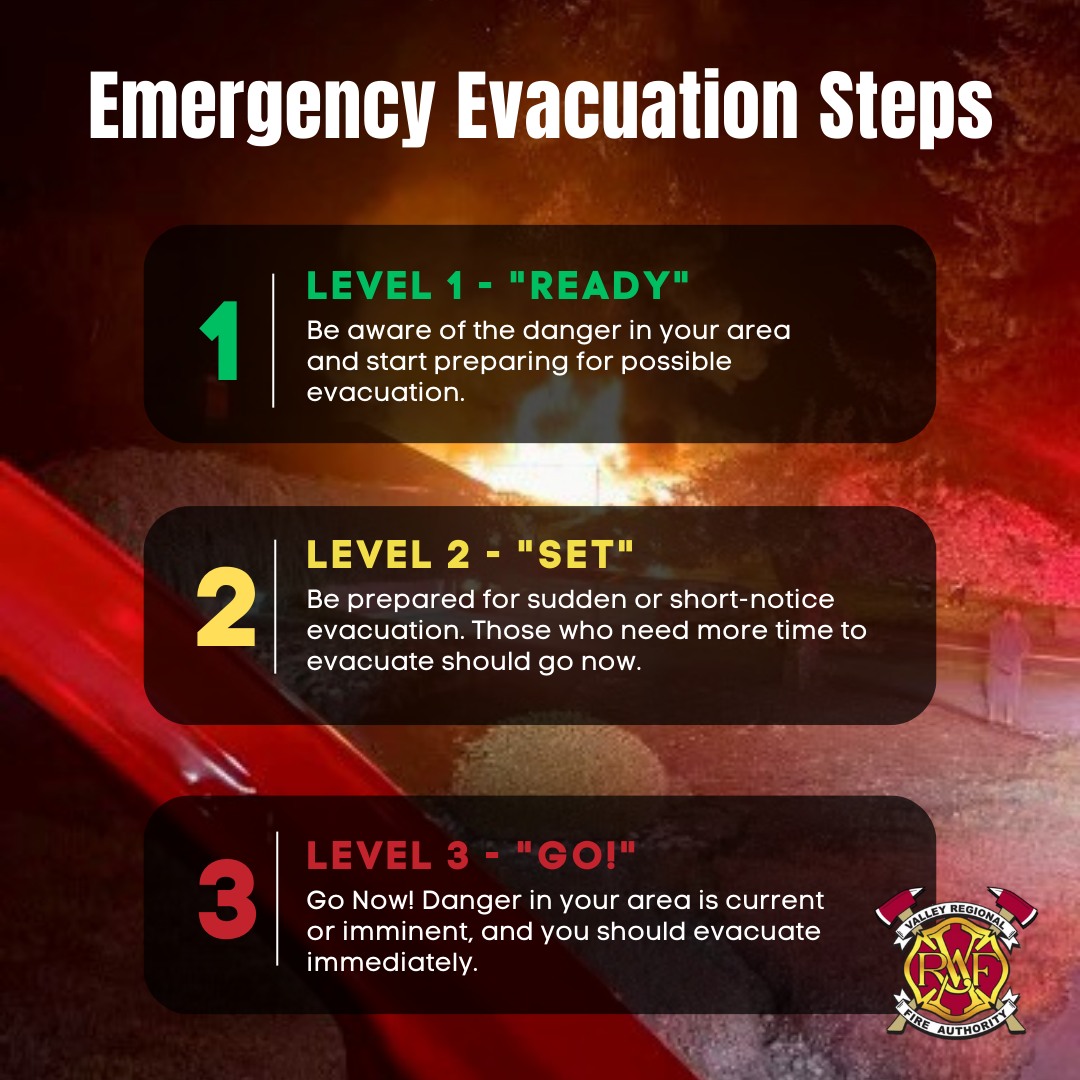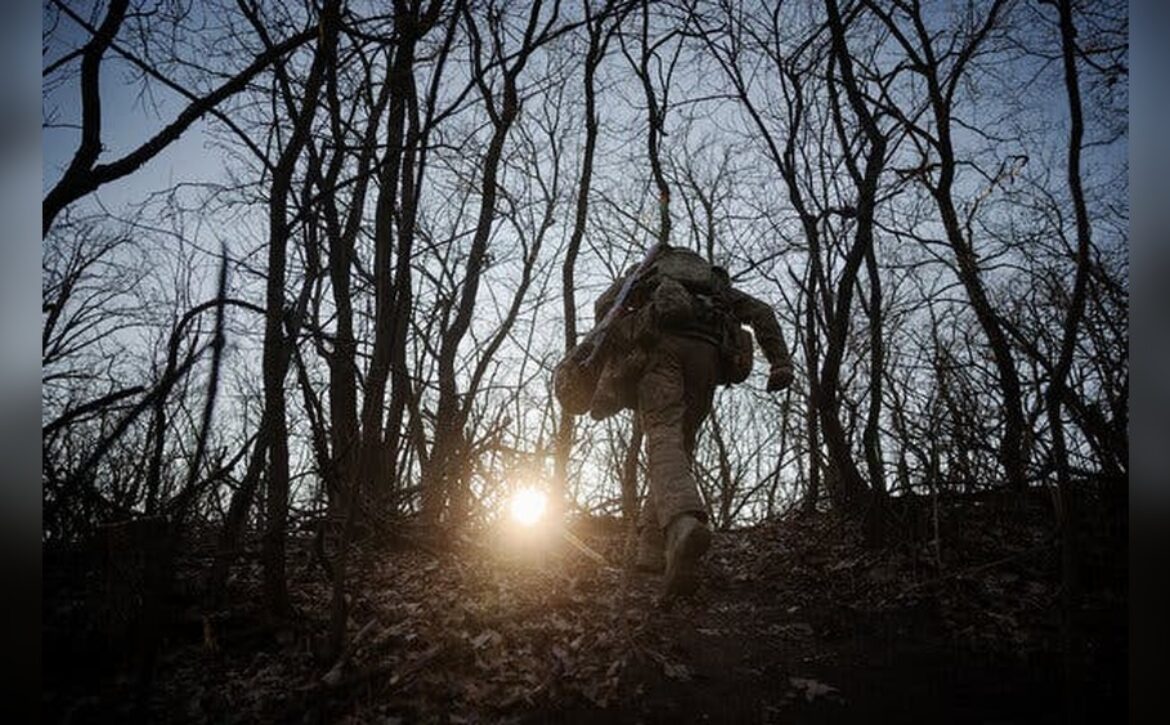
How to Become a Fire Safety Level 2: Step-by-Step Guide
Do you ever wonder what it takes to ensure safety in the face of fire hazards? Becoming a Fire Safety Level 2 professional might just be the empowering step you need.
Imagine being the person everyone relies on to keep environments safe, preventing potential disasters before they even begin. Not only does this role equip you with life-saving skills, but it also opens doors to a rewarding career in fire safety.
In this guide, you’ll discover everything you need to know about becoming a Fire Safety Level 2 expert. Get ready to unlock a world where your skills can make a real difference. Keep reading to find out how you can take the next step toward this vital and impactful career.

Importance Of Fire Safety Training
Fire safety training is essential for every workplace and public area. It equips individuals with skills to respond effectively to fire emergencies. Proper training can prevent injuries and save lives. Understanding fire risks and safety protocols is crucial. It empowers employees to act swiftly and safely.
Fire safety training also reduces property damage. With the right knowledge, staff can limit fire spread. This minimizes losses and ensures quicker recovery. Training promotes a culture of safety and awareness. It builds confidence in handling emergencies calmly.
Understanding Fire Hazards
Recognizing fire hazards is the first step in fire safety. It involves identifying potential sources of fire. This includes flammable materials and faulty electrical equipment. Awareness helps in taking preventive measures. Regular checks and maintenance can prevent accidents.
Effective Use Of Fire Extinguishers
Using a fire extinguisher effectively requires training. Not all fires are the same. Different types of extinguishers address different fires. Knowing which one to use is vital. Quick and correct use can control a fire before it spreads.
Evacuation Procedures
Evacuation procedures are critical during a fire. Training ensures everyone knows the nearest exits. It teaches how to leave safely and orderly. Panic can lead to chaos. Trained individuals can guide others to safety.
Regular Drills And Practice
Regular drills reinforce fire safety training. They prepare employees for real emergencies. Practice makes response second nature. Drills highlight any weaknesses in current plans. They offer opportunities to improve.
Benefits Of Level 2 Certification
Fire Safety Level 2 certification offers many advantages. It enhances your knowledge and skills in fire safety. This certification demonstrates your commitment to safety and professional growth. Understanding these benefits can help you decide if this certification is right for you.
Professional Growth
Achieving Level 2 Certification can boost your career. It provides advanced skills that employers value. You become more competent in handling fire safety tasks. This competence can lead to better job opportunities and promotions.
Enhanced Safety Knowledge
Level 2 Certification expands your safety knowledge. You learn about fire risk assessments and emergency procedures. This knowledge helps in preventing fire incidents. You can effectively manage fire safety in various environments.
Increased Confidence
With Level 2 Certification, your confidence grows. You gain assurance in your ability to handle safety equipment and protocols. This confidence is vital in emergencies. It ensures you act quickly and efficiently.
Compliance With Regulations
Fire Safety Level 2 ensures you meet legal standards. You learn about fire safety laws and regulations. This helps in maintaining compliance with safety requirements. Compliance reduces risks and potential legal issues.
Better Communication Skills
The certification improves your communication skills. You learn to explain fire safety measures clearly. This skill is important when training others or conducting safety drills. Good communication ensures everyone understands safety protocols.
Eligibility Criteria
Embarking on a journey to become a Fire Safety Level 2 professional is an exciting opportunity to enhance your skills and contribute to safer environments. However, understanding the eligibility criteria is crucial. It ensures you meet all the prerequisites before diving into the training.
Prerequisites For Enrollment
Before you can enroll, certain prerequisites need to be met. You must have completed Fire Safety Level 1 training successfully. This foundational knowledge is essential because it introduces you to basic fire safety protocols and practices.
Age is another factor. Most programs require you to be at least 18 years old. This age requirement is in place to ensure maturity and responsibility in handling fire safety tasks.
Educational Background
Your educational background can play a significant role. While a high school diploma is generally needed, having additional certifications can bolster your application. Schools and training centers often prefer candidates with a background in safety or emergency management.
Imagine the advantage of having prior experience in safety management. It not only boosts your confidence but also makes you a compelling candidate for Level 2 training.
Physical Fitness Requirements
Physical fitness is paramount. Fire safety roles often require agility and strength. Training centers may conduct assessments to ensure candidates can handle the physical demands.
Ask yourself: are you ready to tackle challenging environments? A commitment to maintaining fitness is necessary, as it directly impacts your performance in emergencies.
Personal Qualities And Skills
Your personal qualities can also influence your eligibility. Traits like attention to detail, quick decision-making, and effective communication are valuable. These skills help you react swiftly and accurately during fire emergencies.
Consider your interpersonal skills. Engaging with team members and coordinating efforts is crucial in fire safety roles.
Understanding these eligibility criteria gives you a clearer path to achieving your Fire Safety Level 2 certification. Each requirement serves a purpose, ensuring you are well-equipped to handle the responsibilities that come with this advanced level of training.
Choosing The Right Training Provider
Choosing the right training provider is crucial for becoming proficient in Fire Safety Level 2. Seek providers with experienced instructors and comprehensive course content. Ensure they offer practical training sessions for hands-on experience.
Choosing the right training provider for Fire Safety Level 2 is crucial. It ensures you receive quality education and certification. Not all training providers offer the same standards. Selecting wisely guarantees you learn valuable skills. Below are some key factors to consider when choosing your provider.
Accreditation And Recognition
Ensure the training provider is accredited. Accreditation means the course meets industry standards. Recognized programs enhance your career prospects. Employers prefer accredited certifications. Check if the provider is acknowledged by relevant authorities. This adds credibility to your qualification.
Course Content And Duration
Examine the course content carefully. It should cover essential fire safety topics. Important areas include risk assessment and emergency procedures. Duration matters too. The course should be comprehensive yet time-efficient. Look for a balanced approach. Both practical and theoretical knowledge are crucial.
Training Methodologies
Training methodologies affect learning outcomes. Interactive sessions enhance understanding. Practical exercises are beneficial. They prepare you for real-world scenarios. The provider should use varied teaching methods. This includes lectures, workshops, and hands-on training. Diverse methodologies cater to different learning styles.
Enrollment Process
Start your journey to become a Fire Safety Level 2 by completing the online application form. Submit necessary documents, including identification and prior certifications. After approval, enroll in the training course and schedule your exam.
The enrollment process for becoming a Fire Safety Level 2 professional is straightforward. Follow these steps to kickstart your career in fire safety. Knowing what you need simplifies the journey.
Documentation Required
Gathering the right documents is crucial. You’ll need a valid ID. A high school diploma or equivalent is necessary. Proof of residency might be required. Check with the institution for any additional documents. Keeping these ready speeds up your process.
Registration Steps
Start by selecting an accredited training provider. Visit their website for course details. Fill out the online application form. Provide all necessary personal information. Submit your documentation. Await confirmation from the provider. They will guide you on the next steps.
Fee Structure
Understanding the fee structure helps plan your budget. Fees vary by institution. Some offer flexible payment options. Check if there are additional costs. These might include study materials. Explore any available discounts or scholarships.
Course Curriculum Overview
Embarking on a journey to become Fire Safety Level 2 certified is a crucial step towards mastering fire prevention and protection. The course curriculum is designed to equip you with essential skills and knowledge. You will learn how to identify risks, handle emergencies, and implement safety principles. This curriculum ensures you are well-prepared for real-world fire safety challenges.
Basic Fire Safety Principles
Understanding basic fire safety principles is like laying the foundation of a building. It involves learning about fire behavior, causes, and prevention strategies. You will explore how fires start and spread, arming yourself with the knowledge to prevent them. Consider how knowing the common causes of workplace fires can help you create a safer environment.
Risk Assessment Techniques
Risk assessment techniques are vital to identify potential hazards. This part of the curriculum will teach you to evaluate spaces and situations. You’ll learn to pinpoint areas that may pose a fire risk, such as overloaded electrical outlets. Imagine conducting a thorough inspection and feeling confident about mitigating risks before they become a threat.
Emergency Response Procedures
Emergency response procedures ensure you react effectively during a fire. The course outlines steps to take when an alarm sounds, including evacuation routes and meeting points. You’ll gain insights into coordinating with emergency services. Have you ever considered how a well-practiced drill can save lives by ensuring everyone knows their role in an emergency?
The curriculum is not just about learning; it’s about applying knowledge to make a difference. Each section provides actionable insights, empowering you to create safer spaces. Are you ready to take on the challenge and enhance your fire safety skills?
Practical Training Sessions
Join practical training sessions to learn essential skills for Fire Safety Level 2. Gain hands-on experience in hazard identification and emergency response techniques. Enhance your safety knowledge with expert guidance and interactive exercises.
Practical training sessions are crucial for anyone aspiring to achieve Fire Safety Level 2 certification. These sessions move beyond theory, immersing you in real-world scenarios and equipping you with the skills needed to handle fire emergencies effectively. Through hands-on experience, you gain confidence and competence, preparing you for any fire safety challenge.
Hands-on Firefighting Skills
Engaging in hands-on firefighting skills is an essential part of your training. You’ll learn how to handle fire hoses, operate extinguishers, and control small fires safely. Imagine the satisfaction of mastering these skills, knowing you can act quickly and efficiently when every second counts. Your instructors will guide you through each step, ensuring you understand the techniques. Mistakes are part of the learning process, so embrace them. By the end of the session, you’ll feel equipped to tackle fire situations with confidence.
Use Of Fire Safety Equipment
Understanding and using fire safety equipment is vital. You’ll learn about different types of extinguishers, smoke detectors, and fire blankets. Each piece of equipment has its purpose, and knowing when and how to use them can save lives. During training, you’ll handle this equipment firsthand. Feel the weight of an extinguisher and practice aiming it correctly. This experience will help you react instinctively in an emergency, using the right tool for the job.
Simulated Emergency Scenarios
Simulated emergency scenarios put your skills to the test. These exercises mimic real-life fire situations, challenging you to apply what you’ve learned under pressure. Imagine the adrenaline rush as you navigate a smoke-filled room, searching for the safest exit. These simulations teach you to think quickly and adapt to changing conditions. They also highlight the importance of teamwork, as you’ll often work alongside others to resolve the scenario. Ask yourself: Are you ready to make crucial decisions when it matters most? Each training component builds on the last, preparing you for a career in fire safety. Are you ready to take the leap and enhance your skills?
Assessment And Evaluation
Becoming a certified Fire Safety Level 2 professional requires thorough assessment and evaluation. This process ensures that you have the necessary knowledge and skills to handle fire safety responsibilities effectively. Understanding what these assessments entail can prepare you for success in this field.
Types Of Assessments
The Fire Safety Level 2 certification includes various assessment types. These assessments test your knowledge and practical skills. Written exams are common. They assess your understanding of fire safety principles. Practical tests might involve real-life scenarios. You demonstrate your ability to apply what you’ve learned. This holistic approach ensures you are well-rounded in fire safety.
Passing Criteria
Each assessment has specific passing criteria. You must achieve a certain score to pass. Written exams often require a minimum percentage. Practical tests might have specific performance benchmarks. Understanding these criteria is crucial. It allows you to focus your preparation effectively. Consistent study and practice are key to meeting these standards.
Certification And Validity
Becoming certified in Fire Safety Level 2 opens many doors. Understanding certification and its validity is crucial. This ensures you remain compliant and knowledgeable. Certification confirms your skills and dedication to safety.
Receiving The Certificate
Completing Fire Safety Level 2 courses is the first step. After finishing, a certificate is awarded. This certificate proves your expertise in fire safety practices. It demonstrates your commitment to safety standards. Ensure you have met all course requirements. This includes attending classes and passing exams.
Renewal And Continuing Education
Certificates have an expiration date. Renewal keeps your knowledge current. It’s important to stay updated on new safety protocols. Continuing education is often required for renewal. It involves taking additional courses or workshops. This ensures you know the latest fire safety techniques.
Career Opportunities
Becoming a Fire Safety Level 2 expert opens many doors. It’s a vital skill that is needed everywhere. From businesses to schools, safety is always a priority. Having this certification puts you in demand. Let’s explore the career paths available.
Roles And Responsibilities
Fire Safety Level 2 professionals have key roles. They assess risks and plan safety measures. They train staff on fire procedures. Regular safety checks are a big part of their job. They ensure compliance with laws. Reporting and documenting safety issues is crucial.
They work with teams to improve safety standards. Keeping everyone safe is their main goal. They offer advice and solutions. They help create emergency plans. Their work saves lives and property.
Industry Demand
Fire safety experts are needed in many industries. Factories and offices need them. Schools and hospitals depend on them. Government buildings require their expertise. Their skills are essential in construction projects. Demand is growing as regulations tighten.
Companies value safety and invest in it. Hiring skilled professionals is a priority. There is a steady demand for trained individuals. Opportunities are diverse and rewarding. Fire safety is a respected field with growth potential.
Tips For Success
Embarking on a journey to become Fire Safety Level 2 certified is rewarding. It requires dedication and focus. Success in this field hinges on understanding key areas. Study and preparation, along with practical experience, are crucial. These tips will guide you towards achieving your certification goals.
Study And Preparation
Begin with a structured study plan. Break down the material into manageable sections. Focus on understanding fire safety protocols. Use flashcards to memorize key points. Join study groups for collaborative learning. Discuss challenging topics with peers. Regularly review and test your knowledge. Utilize online resources and practice tests. They provide real-world scenarios and questions. Stay updated with current fire safety regulations. This ensures your knowledge is relevant and accurate.
Practical Experience
Hands-on experience solidifies theoretical knowledge. Volunteer with local fire departments. Observe how professionals handle fire safety. Participate in fire drills and safety workshops. They offer valuable insights into real-world applications. Seek mentorship from experienced firefighters. Their advice and guidance are invaluable. Apply theoretical concepts in practical settings. This enhances your understanding and skills. Gain experience through internships or training programs. They provide exposure to diverse fire safety scenarios. Regular practice builds confidence and competence.
Frequently Asked Questions
What Is Fire Safety Level 2 Certification?
Fire Safety Level 2 certification provides advanced training in fire safety practices. It covers risk assessment, prevention, and emergency procedures. This certification is crucial for those seeking in-depth knowledge and skills. It is ideal for workplace safety officers and anyone responsible for fire safety management.
How Long Does Fire Safety Level 2 Training Take?
The duration of Fire Safety Level 2 training varies. Typically, it takes between one to two days. The course may include both theoretical and practical sessions. Some training providers offer flexible schedules to accommodate learners’ needs.
Who Should Pursue Fire Safety Level 2 Training?
Fire Safety Level 2 training is recommended for safety officers, managers, and supervisors. It’s essential for anyone responsible for workplace safety. This training equips individuals with the skills to effectively manage fire risks. It enhances their ability to implement fire safety measures.
What Topics Are Covered In Fire Safety Level 2?
Fire Safety Level 2 covers fire risk assessment and prevention strategies. It includes emergency procedures and fire safety regulations. Participants learn about fire extinguisher types and their uses. The course also includes training on evacuation procedures and safety equipment maintenance.
Conclusion
Becoming a Fire Safety Level 2 professional is achievable. Start with proper training. Practice your skills regularly. Stay updated on fire safety guidelines. Join workshops and courses to enhance knowledge. Work with experienced professionals for real-world insights. This journey requires dedication and hard work.
But the rewards are worth it. You’ll help save lives and protect property. Keep learning and growing in your role. Your community will appreciate your efforts. Fire safety is crucial for everyone’s well-being. So, take the steps needed. Become a reliable fire safety expert.
Your actions can make a big difference.





